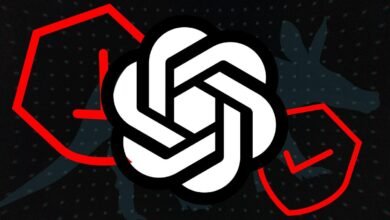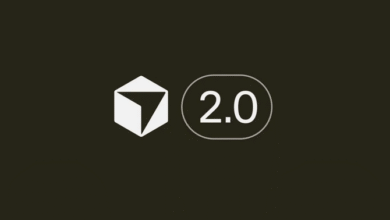The End of AI Coding Tools: What’s Next for Developers?

▼ Summary
– AI coding startups like Cursor and Replit lack viable business plans to compete with foundation model giants such as Anthropic, OpenAI, and Google.
– These startups depend heavily on foundation models for code generation, with Anthropic’s Claude models considered the best at this task.
– Observability, monitoring how code behaves in production, is a key differentiation that could help some companies survive as standalone businesses.
– Startups may attempt to build their own AI models or merge with DevOps companies to add observability features and reduce dependence on foundation models.
– Many AI coding startups will likely face acquisition or bankruptcy when venture capital funding dries up or if the AI bubble bursts.
The future of AI-powered coding tools faces significant challenges as smaller startups struggle to compete against tech giants controlling the underlying foundation models. Despite billions in venture capital funding, companies like Cursor, Replit, and Augment Code may face acquisition or closure because they lack sustainable business models to distinguish themselves from industry leaders such as Anthropic, OpenAI, Google, and Microsoft.
Jeremy Burton, CEO of software company Observe, Inc., explains that code generation sits too close to the foundation model layer. He questions whether these specialized tools can add enough unique value to build lasting businesses. “Code generation is so close to the foundation model. I just don’t think you can add enough value above that over time to make a business,” Burton noted during a recent discussion.
Burton brings extensive enterprise technology experience to this assessment, having held leadership positions at Oracle, Symantec, Serena Software, and Dell Technologies before leading Silicon Valley-based Observe.
The fundamental problem stems from these startups’ dependence on the very foundation models created by their largest competitors. Burton specifically highlights Anthropic’s Claude models as particularly advanced in automated code generation. “Most of those startups depend on Anthropic’s model,” he observed. “Code generation tools are going to struggle to keep ahead of Anthropic.”
These coding tool companies have focused on developing cloud-based integrated development environments (IDEs) that help programmers write, test, debug, and deploy software. Venture capital has flowed generously into this sector because enterprise product and engineering teams represent the second-largest adopters of AI technology after IT operations.
According to FactSet data, approximately $3 billion has been invested in key startups including Data Robot (Cursor’s parent company), Replit, Cognition AI (Windsurf’s owner), Augment Computing, and All Hands AI. Companies with related application deployment technology like Harness have also received hundreds of millions in funding.
The core functionality these tools provide, code generation, relies entirely on foundation models developed by the major AI companies. Burton believes Anthropic’s own IDE, Claude Code, will eventually become “good enough” for most programming needs when combined with access to code repositories like GitHub.
As competition intensifies, Burton sees observability as the next competitive frontier. His company, Observe, operates in the DevOps space alongside companies like Datadog, Dynatrace, and Cisco’s Splunk. Observe builds knowledge graphs that map application structures, enabling developers to identify and resolve problems in running software, a capability known as observability.
“To fix issues with your code, you ultimately will need more than access to GitHub; you need to see how that code is behaving in production,” Burton emphasized. He argues that building deterministic systems to manage hundreds of terabytes of telemetry data is significantly more challenging for foundation model companies than simply improving their core AI models.
Observe’s technology integrates with various data storage systems, including Snowflake running on Amazon AWS’s Iceberg tables. Burton serves on Snowflake’s board of directors. The platform analyzes telemetry signals from running applications, investigates problems automatically, and suggests fixes for developer review, representing what Burton calls “a pretty wild departure from the troubleshooting flow of yesterday.”
The path forward for coding tool startups remains uncertain. Some, like Cursor, have announced plans to develop their own AI models specifically for coding, potentially reducing their dependence on external foundation models. However, competing with the substantial resources of companies like Anthropic presents enormous challenges.
Anthropic, backed by Amazon investment, is utilizing Amazon’s massive Project Rainier AI facility to develop next-generation Claude models. Amazon plans to dedicate a million Trainium2 AI chips across multiple interconnected AWS data centers to support this effort.
Burton anticipates that IDE manufacturers might incorporate observability features into their coding tools to differentiate themselves. “In order to differentiate from the foundational models, the pure-play code-gen startups will have to go beyond being a thin layer on top of an LLM,” he stated. “The obvious adjacency is observability.”
This suggests potential mergers between code tool developers like Data Robot’s Cursor and DevOps companies such as Harness. Alternatively, established software firms like Dynatrace, Datadog, or Splunk might acquire these startups. Burton notes that current valuations make acquisitions challenging but expects opportunities may emerge if competitive pressure from LLM companies causes valuations to decline.
As long as venture capital continues flowing into the sector, these startups can maintain operations. However, Burton warns that the situation could change rapidly. “The challenge is going to be when either their growth slows and/or the [AI] bubble bursts,” he predicted. “Valuations then plummet, there’s no financing available, and you end up with a mix of fire sale acquisitions or bankruptcies when there are no dance partners left.”
(Source: ZDNET)


